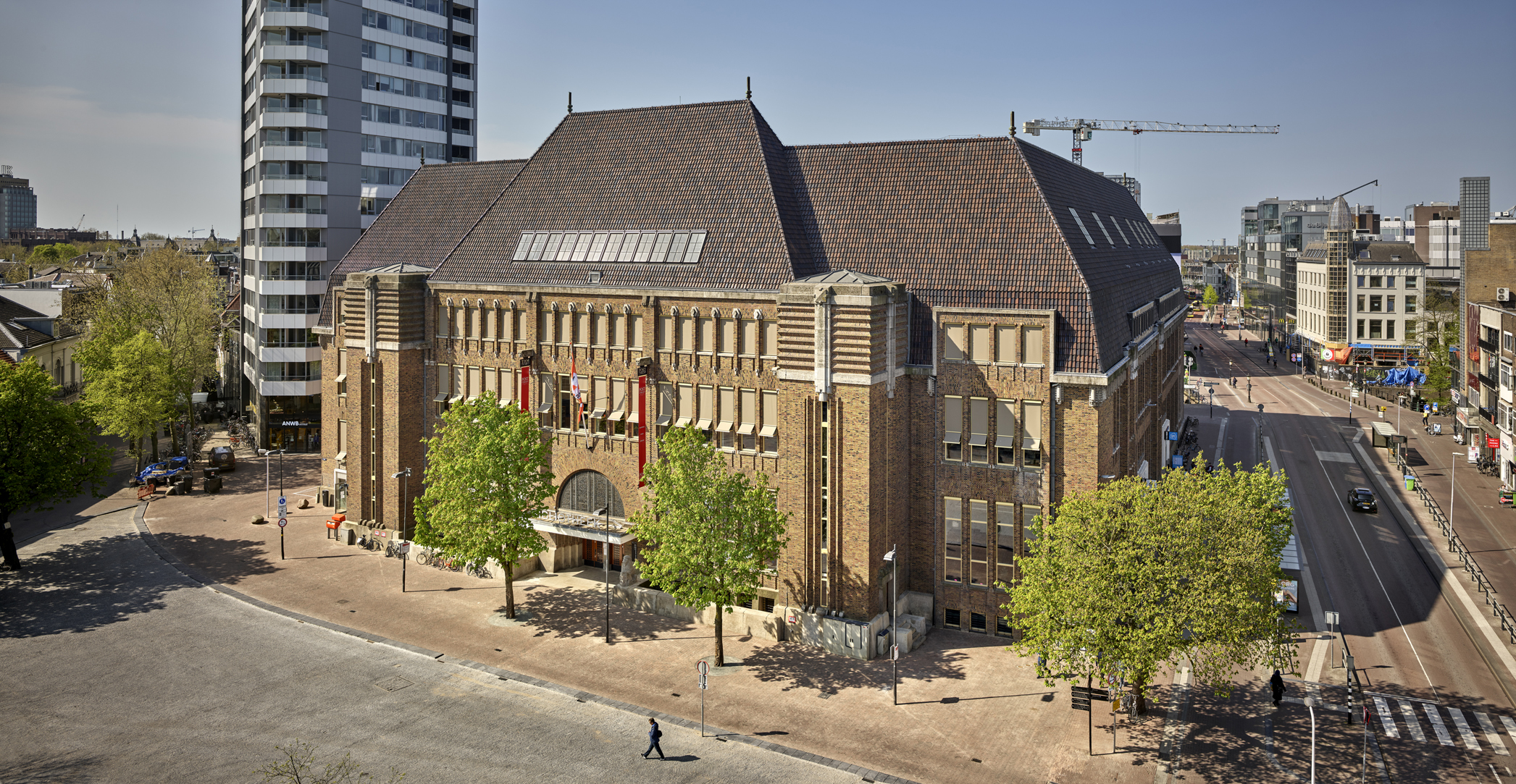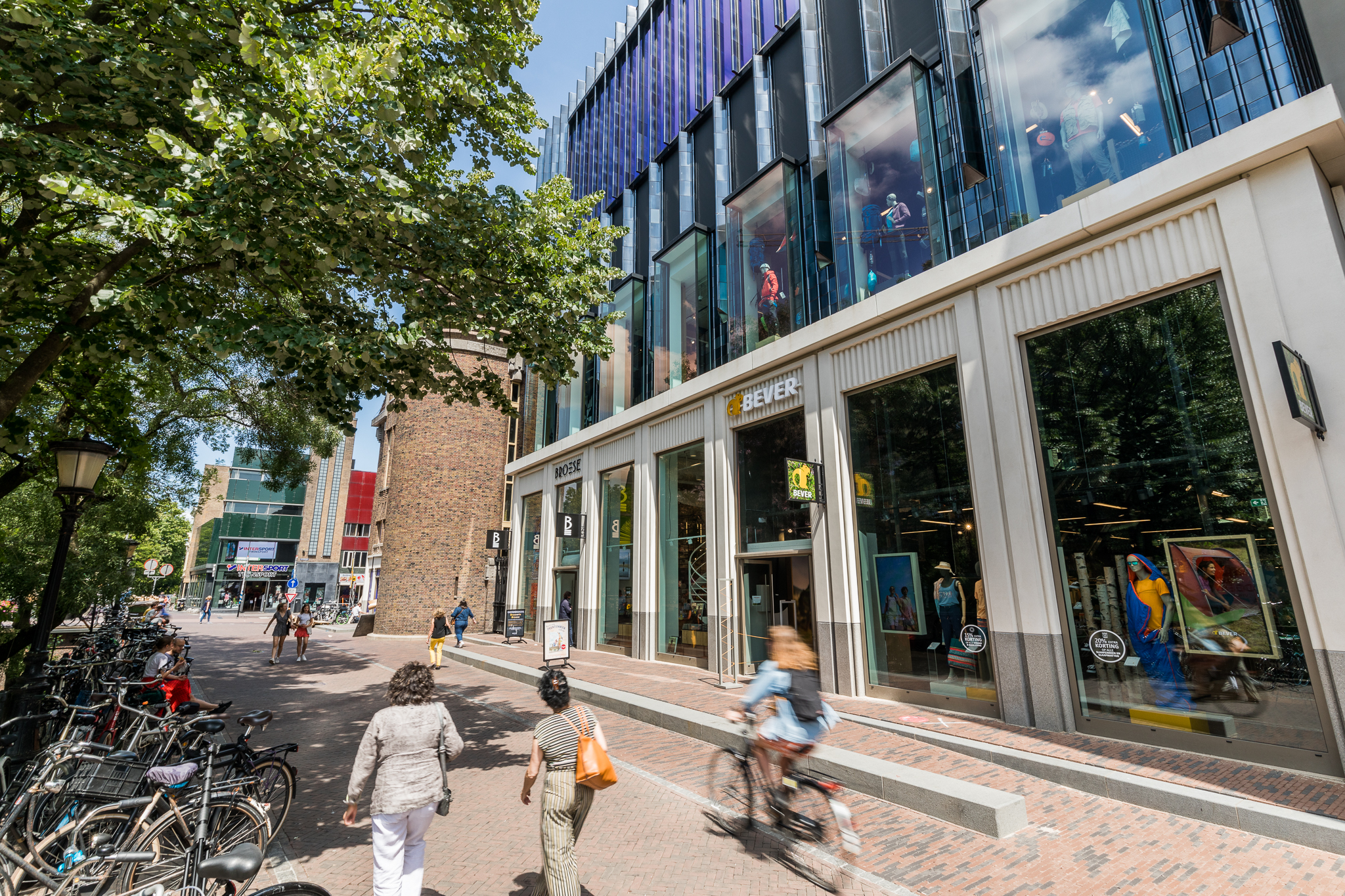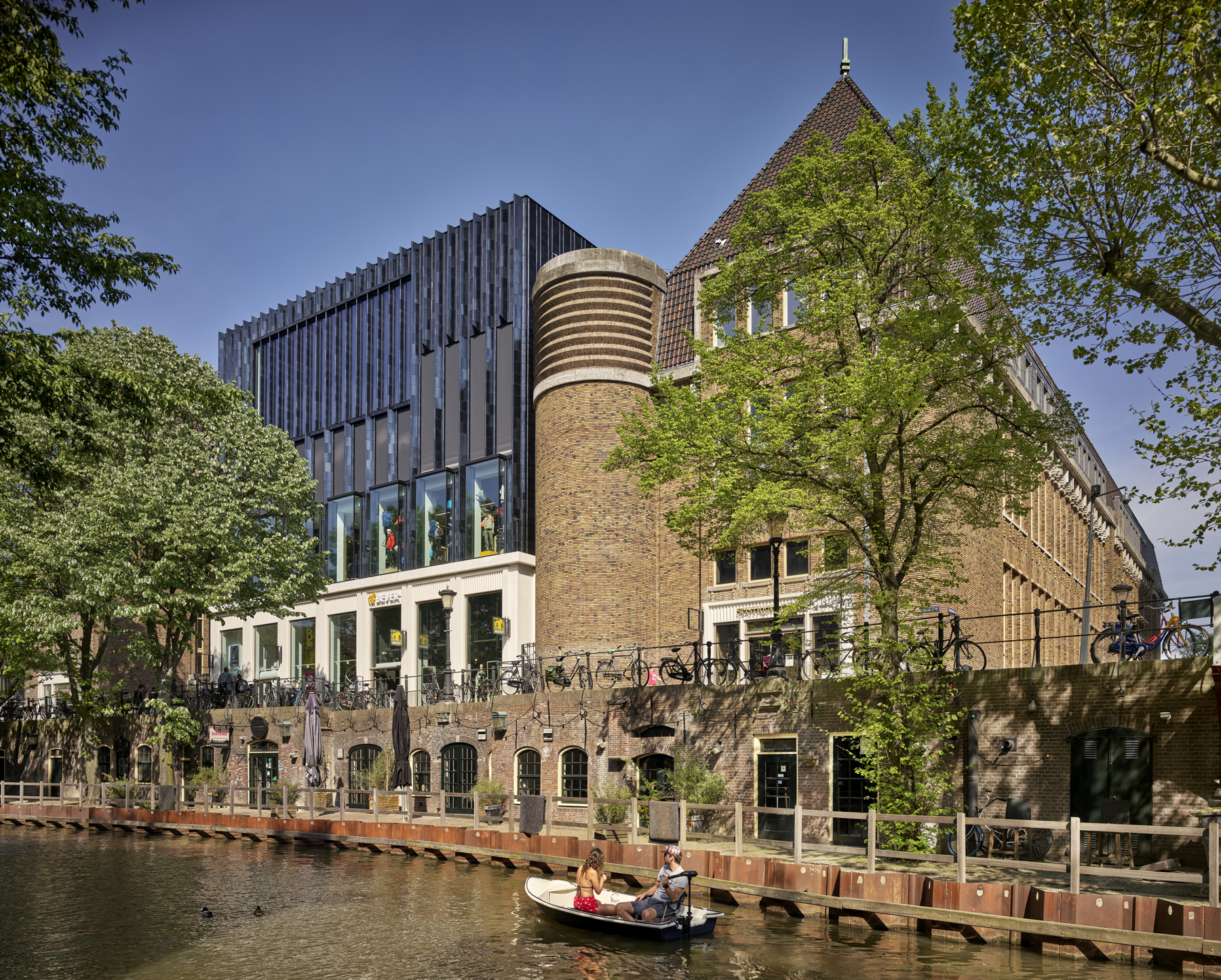Post Utrecht
Post Utrecht has undergone a remarkable transformation. The former post office, which was closed to the public for a number of years, has been given a new, multifunctional designation. The historic building now offers approximately 9,000 m2 of library space, including catering facilities and an auditorium that sits 200 visitors, 5,500 m2 of shops and a 1,000 m2 bicycle parking facility.
The building’s unique hall functions as the library’s central square, and four spacious shops have been realised on the Oudegracht side. Two new entrances have been added on Oudegracht and Potterstraat, in addition to the building’s original entrance on Neude Square. Post Utrecht will be open to the public from morning till evening, in line with the wide range of its functions.
History
In the Middle Ages, the site of the former post office was home to the Cecilia Monastery. During the Reformation, it became illegal to practise Catholicism, and the monastery’s buildings were sold to the city council. In 1920, the monastery was demolished to make way for Utrecht’s new main post office, which was completed in 1924. For almost 90 years, residents came to the post office to mail letters, buy stamps and send packages.
In 2008, it was announced that all post offices in the Netherlands would be closed, and on 28 October 2011 Utrecht’s main post office on Neude Square was the last Dutch post office to close its doors.
Architecture
The building is a beautiful example of the Amsterdam School style of architecture, which is characterised by the use of expressive and imaginative shapes and forms. Architect J. Crouwel Jr, who was responsible for the post office’s design, drew inspiration from the work of the Finnish architect Eliel Saarinen.
The building’s crown jewel is its stunning entrance hall, with its beautiful parabolic arches of glazed yellow brick. The postal service’s role in making the world more accessible is symbolised by the cast sculptures of the five continents, made by H.A. van den Eynde. A sixth sculpture symbolises trade and prosperity, while transportation by land, sea and air is represented at the entrance. The building’s clock and the glazed-tile national coat of arms, which decorate the end walls, were manufactured by De Porceleyne Fles.
Address
Neude 11
3512 AE Utrecht



